Integration of Rooftop Solar PV on Trains: Comparative Analysis of MPPT Methods for Auxiliary Power Supply of Locomotives in Milan
Abstract
:1. Introduction
- -
- Proposing direct integration of PV panels on a train’s roof;
- -
- Presenting the GSA as an innovative approach to identifying the MPP in rooftop solar systems;
- -
- Comparing the performance of GSA with PO and INC algorithms;
- -
- Real case-study-based research regarding integration of PV panels on the roof of trains.
2. Schematic of Proposed System
3. Modeling
3.1. Photovoltaic Cell Model
- : the current generated by the appearance of light;
- : the PV cell output voltage;
- : the PV cell output current;
- : the equivalent resistors in series and parallel;
- : the reverse saturation current for the diode;
- q: the charge of the electron (1.6 × 10−19 C);
- A: ideal diode constants;
- K: Boltzmann constant (1.38 × 10−23 J/K);
- T: the absolute Kelvin temperature.
3.2. DC/DC Boost Converter
3.3. Maximum Power Point Tracking
4. Methodology and Proposed Algorithm
5. Simulation Results and Discussion
6. Conclusions
Author Contributions
Funding
Data Availability Statement
Conflicts of Interest
References
- Farsi, S.; Asgari, H. Effects of Fouled Ballast Layer on Railway Bridge Vibrations. Int. J. Sci. Eng. Appl. (IJSEA) 2024, 13, 35–39. [Google Scholar]
- Kaleybar, H.J.; Brenna, M.; Castelli-Dezza, F.; Carmeli, M.S. Smart Hybrid Electric Railway Grids: A Comparative Study of Architectures. In Proceedings of the 2023 IEEE International Conference on Electrical Systems for Aircraft, Railway, Ship Propulsion and Road Vehicles & International Transportation Electrification Conference (ESARS-ITEC), Venice, Italy, 29–31 March 2023; pp. 1–6. [Google Scholar] [CrossRef]
- Farsi, S.; Esmaeili, M.; Naseri, R. Effect of rock strength on the degradation of ballast equipped with under sleeper pad using discrete element method. Int. J. Sci. Res. Arch. 2024, 11, 2579–2586. [Google Scholar] [CrossRef]
- Ahmadi, M.; Kaleybar, H.J.; Brenna, M.; Castelli-Dezza, F.; Carmeli, M.S. DC Railway Micro Grid Adopting Renewable Energy and EV Fast Charging Station. In Proceedings of the 2021 IEEE International Conference on Environment and Electrical Engineering and 2021 IEEE Industrial and Commercial Power Systems Europe (EEEIC/I&CPS Europe), Bari, Italy, 7–10 September 2021; pp. 1–6. [Google Scholar] [CrossRef]
- Sarvi, M.; Azadian, A. A comprehensive review and classified comparison of MPPT algorithms in PV systems. Energy Syst. 2022, 13, 281–320. [Google Scholar] [CrossRef]
- Jafari Kaleybar, H.; Hafezi, H.; Brenna, M.; Faranda, R.S. Smart AC-DC Coupled Hybrid Railway Microgrids Integrated with Renewable Energy Sources: Current and Next Generation Architectures. Energies 2024, 17, 1179. [Google Scholar] [CrossRef]
- The World’s First Solar-Powered Train in Australia. Available online: https://www.bridgestone.com/bwsc/stories/article/2019/06/17-2.html (accessed on 1 August 2024).
- Vasisht, M.S.; Vishal, C.; Srinivasan, J.; Ramasesha, S.K. Solar photovoltaic assistance for LHB rail coaches. Curr. Sci. 2014, 107, 255–259. [Google Scholar]
- Thelkar, A.R.; Veerasamy, B.; Mekonnen, T.; Ahmmed, M.; Alem, A.; Jote, A. Interfacing of regulator and rectifier unit with solar charge controller for optimal utilization of solar power on railway coaches. In Proceedings of the 2016 IEEE International Conference on Renewable Energy Research and Applications (ICRERA), Birmingham, UK, 20–23 November 2016; IEEE: Piscataway, NJ, USA, 2016; pp. 730–735. [Google Scholar]
- India’s ‘First Solar-Powered Train’: All You Want to Know About Indian Railways’ Green Initiative. Available online: http://www.financialexpress.com/economy/indiasfirst-solar-poweredtrain-all-you-want-to-know-about-indian-railwaysgreeninitiative/264505/ (accessed on 10 July 2024).
- Raizada, S.; Verma, V. Step Up Gain Converter with fast MPPT control under moving partial shading for train rooftop PV-DC-µG. In Proceedings of the 2018 IEEE International Conference on Electrical Systems for Aircraft, Railway, Ship Propulsion and Road Vehicles & International Transportation Electrification Conference (ESARS-ITEC), Nottingham, UK, 7–9 November 2018; IEEE: Piscataway, NJ, USA, 2018; pp. 1–6. [Google Scholar]
- Talha, I.M.; Huawei, L.; Abdul, Q.; Arif, H. Design of Hybrid Energy System of CRH2 Train Passing Through Neutral Section. In Proceedings of the 2022 4th Global Power, Energy and Communication Conference (GPECOM), Nevsehir, Turkey, 14–17 June 2022; IEEE: Piscataway, NJ, USA, 2022; pp. 117–123. [Google Scholar]
- Ouaid, M.A.; Ouassaid, M.; Tebaa, M. Gain Assessment of Powering Train Loads with Rooftop Solar Panels: Case study of Morocco. In Proceedings of the 2023 5th Global Power, Energy and Communication Conference (GPECOM), Nevsehir, Turkiye, 14–16 June 2023; IEEE: Piscataway, NJ, USA, 2023; pp. 472–476. [Google Scholar]
- Sawant, P.T.; Bhattar, C. Optimization of PV system using particle swarm algorithm under dynamic weather conditions. In Proceedings of the 2016 IEEE 6th International Conference on Advanced Computing (IACC), Bhimavaram, India, 27–28 February 2016; IEEE: Piscataway, NJ, USA, 2016; pp. 208–213. [Google Scholar]
- Enslin, J.; Wolf, M.; Snyman, D.; Swiegers, W. Integrated photovoltaic maximum power point tracking converter. IEEE Trans. Ind. Electron. 1997, 44, 769–773. [Google Scholar] [CrossRef]
- del Rio, A.; Barambones, O.; Uralde, J.; Artetxe, E.; Calvo, I. Particle Swarm Optimization-Based Control for Maximum Power Point Tracking Implemented in a Real Time Photovoltaic System. Information 2023, 14, 556. [Google Scholar] [CrossRef]
- Femia, N.; Granozio, D.; Petrone, G.; Spagnuolo, G.; Vitelli, M. Predictive & adaptive MPPT perturb and observe method. IEEE Trans. Aerosp. Electron. Syst. 2007, 43, 934–950. [Google Scholar]
- Mei, Q.; Shan, M.; Liu, L.; Guerrero, J.M. A novel improved variable step-size incremental-resistance MPPT method for PV systems. IEEE Trans. Ind. Electron. 2010, 58, 2427–2434. [Google Scholar] [CrossRef]
- Ji, Y.-H.; Jung, D.-Y.; Kim, J.-G.; Kim, J.-H.; Lee, T.-W.; Won, C.-Y. A Real Maximum Power Point Tracking Method for Mismatching Compensation in PV Array Under Partially Shaded Conditions. IEEE Trans. Power Electron. 2011, 26, 1001–1009. [Google Scholar] [CrossRef]
- Yap, K.Y.; Sarimuthu, C.R.; Lim, J.M.-Y. Artificial intelligence based MPPT techniques for solar power system: A review. J. Mod. Power Syst. Clean Energy 2020, 8, 1043–1059. [Google Scholar]
- Kaleybar, H.J.; Davoodi, M.; Brenna, M.; Zaninelli, D. Applications of Genetic Algorithm and Its Variants in Rail Vehicle Systems: A Bibliometric Analysis and Comprehensive Review. IEEE Access 2023, 11, 68972–68993. [Google Scholar] [CrossRef]
- Ishaque, K.; Salam, Z. An improved modeling method to determine the model parameters of photovoltaic (PV) modules using differential evolution (DE). Solar Energy 2011, 85, 2349–2359. [Google Scholar] [CrossRef]
- Eiben, A.; Schippers, C. On evolutionary exploration and exploitation. Fundam. Inform. 1998, 35, 35–50. [Google Scholar] [CrossRef]
- Rashedi, E.; Nezamabadi-Pour, H.; Saryazdi, S. GSA: A gravitational search algorithm. Inf. Sci. 2009, 179, 2232–2248. [Google Scholar] [CrossRef]
- Saha, D. A GSA based improved MPPT system for PV generation. In Proceedings of the 2015 IEEE International Conference on Research in Computational Intelligence and Communication Networks (ICRCICN), Kolkata, India, 20–22 November 2015; IEEE: Piscataway, NJ, USA, 2015; pp. 131–136. [Google Scholar]
- Dhas, B.G.S.; Deepa, S.N. A hybrid PSO and GSA-based maximum power point tracking algorithm for PV systems. In Proceedings of the 2013 IEEE International Conference on Computational Intelligence and Computing Research, Enathi, India, 26–28 December 2013; IEEE: Piscataway, NJ, USA, 2013; pp. 1–4. [Google Scholar]
- Pervez, I.; Sarwar, A.; Tayyab, M.; Sarfraz, M. Gravitational search algorithm (GSA) based maximum power point tracking in a solar PV based generation system. In Proceedings of the 2019 Innovations in Power and Advanced Computing Technologies (i-PACT), Vellore, India, 22–23 March 2019; IEEE: Piscataway, NJ, USA, 2019; Volume 1, pp. 1–6. [Google Scholar]
- Li, L.-L.; Lin, G.-Q.; Tseng, M.-L.; Tan, K.; Lim, M.K. A maximum power point tracking method for PV system with improved gravitational search algorithm. Appl. Soft Comput. 2018, 65, 333–348. [Google Scholar] [CrossRef]
- Javanmard, A.; Kaleybar, H.J.; Brenna, M. Roof-Top Solar Photovoltaic Integration on Trains Supplying Auxiliary Power Systems: A Real Case Study. Presented at the Power Electronics and Drives: Systems and Technologies Conference Pedstc. 2024. Available online: https://sid.ir/paper/1132513/en (accessed on 5 July 2024).
- Double Deck, part 5: ALe.710-ALe.711 alias TSR (Regional Service Train). Available online: https://scalaenne.wordpress.com/2020/10/24/doppio-piano-parte-5-tsr-treno-servizio-regionale (accessed on 5 December 2023).
- Hashemi, T.; Esfanjani, R.M.; Kaleybar, H.J. Composite Switched Lyapunov Function-Based Control of DC–DC Converters for Renewable Energy Applications. Electronics 2024, 13, 84. [Google Scholar] [CrossRef]
- Chatrenour, N.; Razmi, H.; Doagou-Mojarrad, H. Improved double integral sliding mode MPPT controller based parameter estimation for a stand-alone photovoltaic system. Energy Convers. Manag. 2017, 139, 97–109. [Google Scholar] [CrossRef]
- Zandabad, Y.Y.; Fazel, S.S. Soft-switching buck/boost full-bridge three-port converter for DC/DC applications. Eng. Sci. Technol. Int. J. 2023, 41, 101382. [Google Scholar] [CrossRef]
- Suganya, R.; Rajkumar, M.V.; Pushparani, P. Simulation and Analysis of Boost Converter with MPPT for PV System using Chaos PSO Algorithm. Int. J. Emerg. Technol. Eng. Res. 2017, 5, 97–105. [Google Scholar]
- Harmonized Index of Consumer Prices (HICP) Energy Inflation Rate in Italy from January 2019 to May 2024, by Commodity. Available online: https://www.statista.com/statistics/1329397/italy-energy-inflation-rate-by-commodity/ (accessed on 15 July 2024).
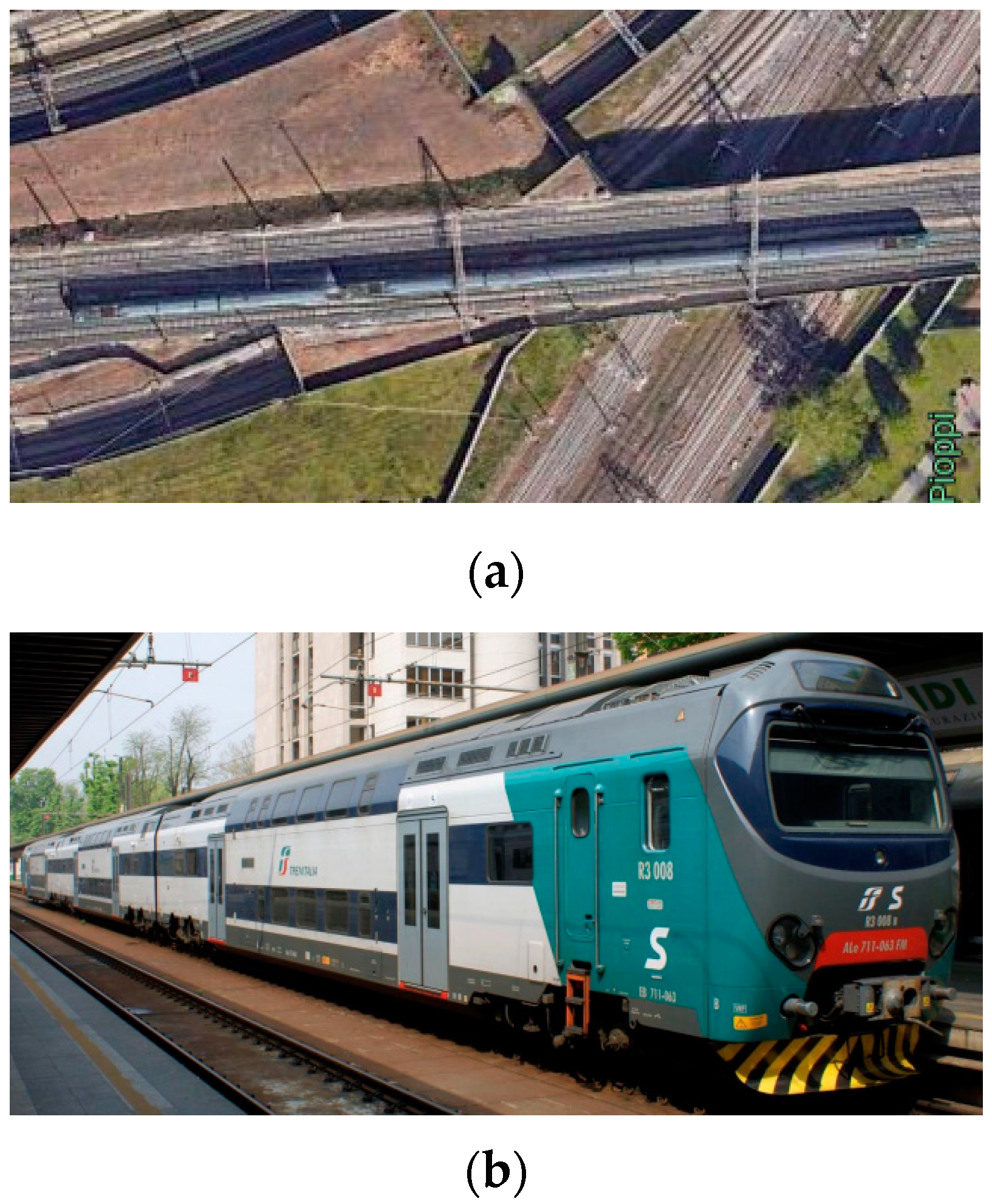
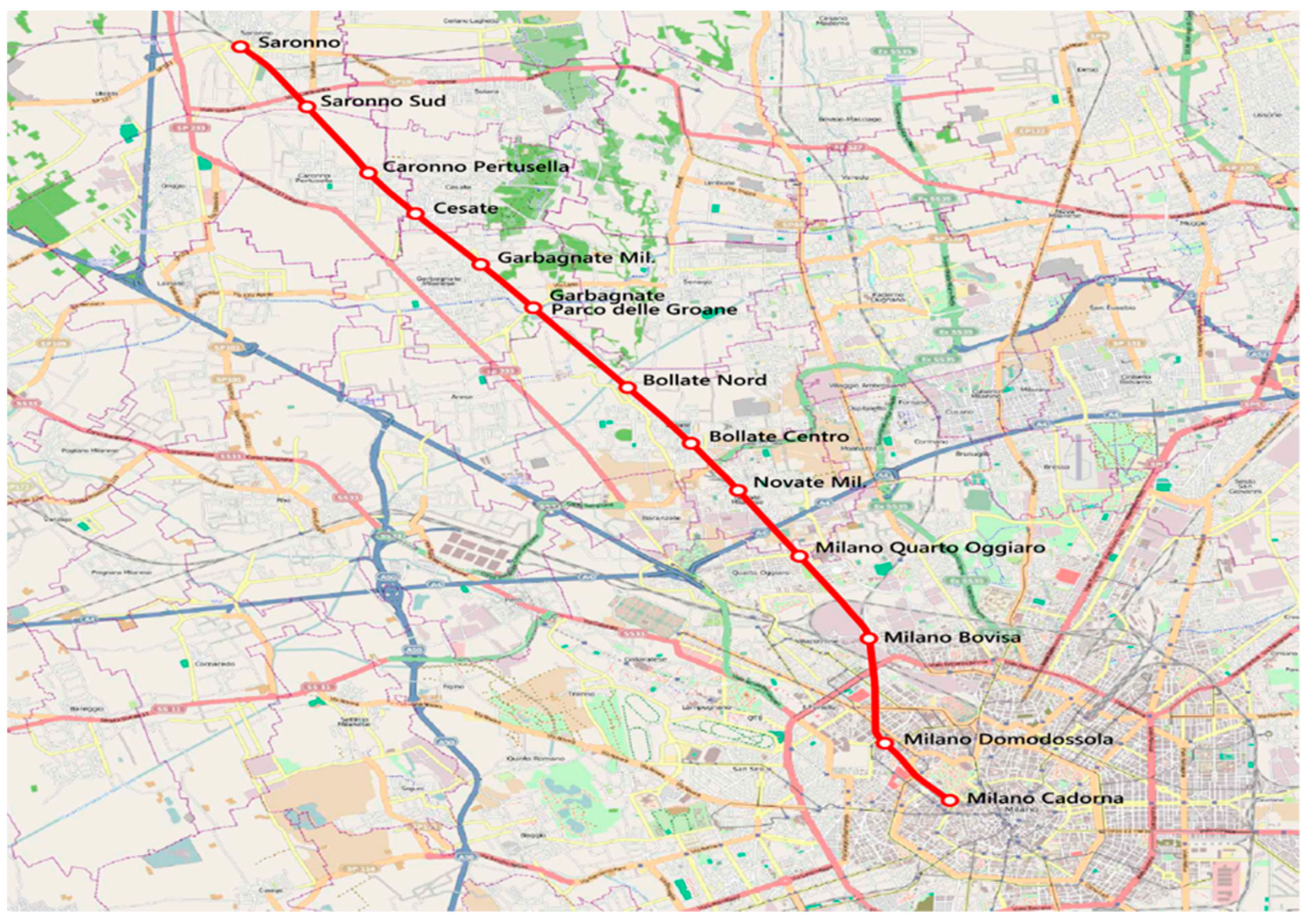
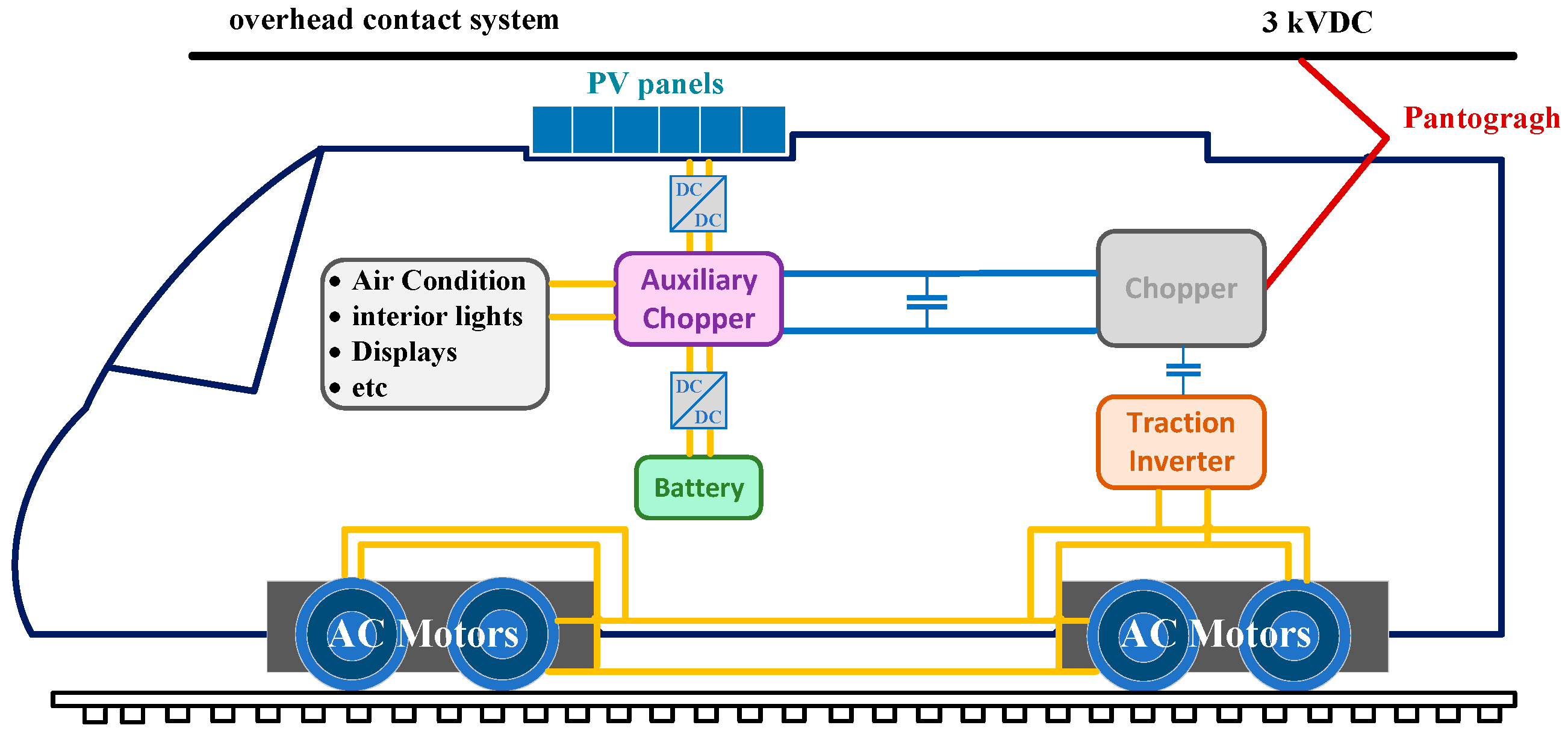

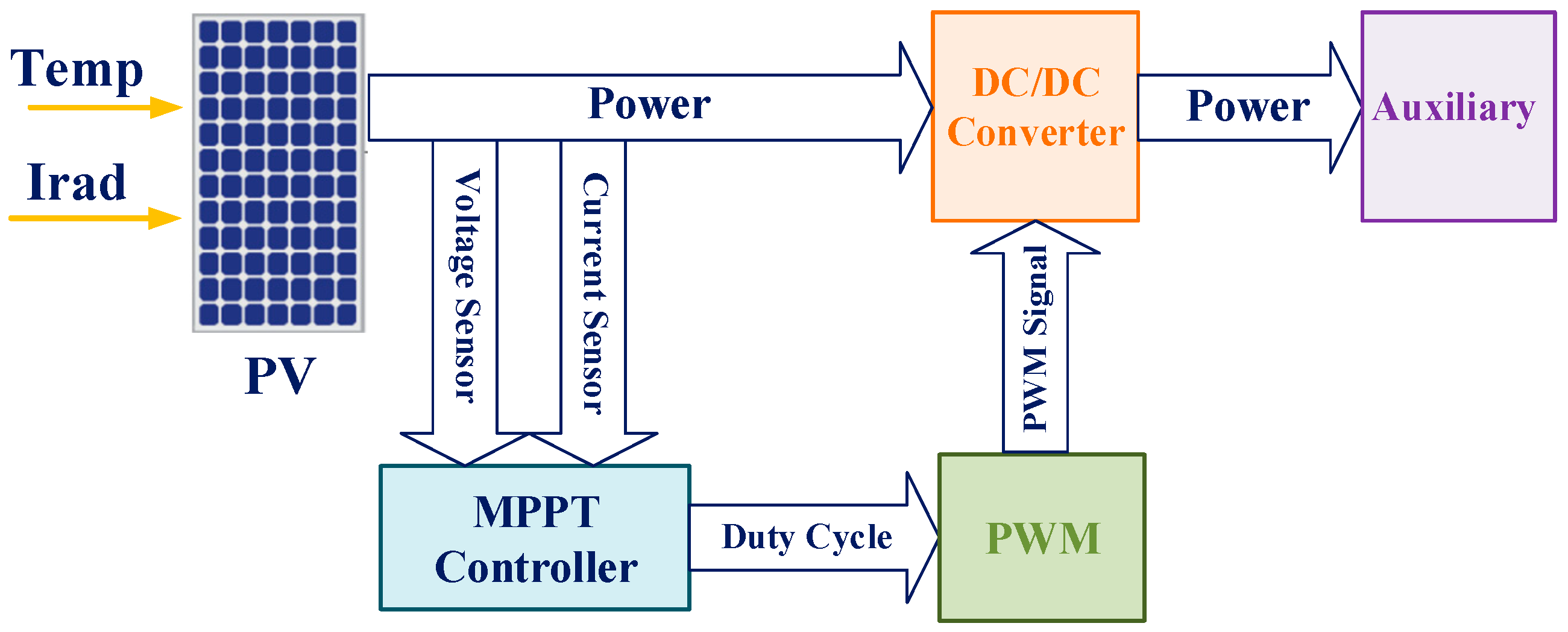

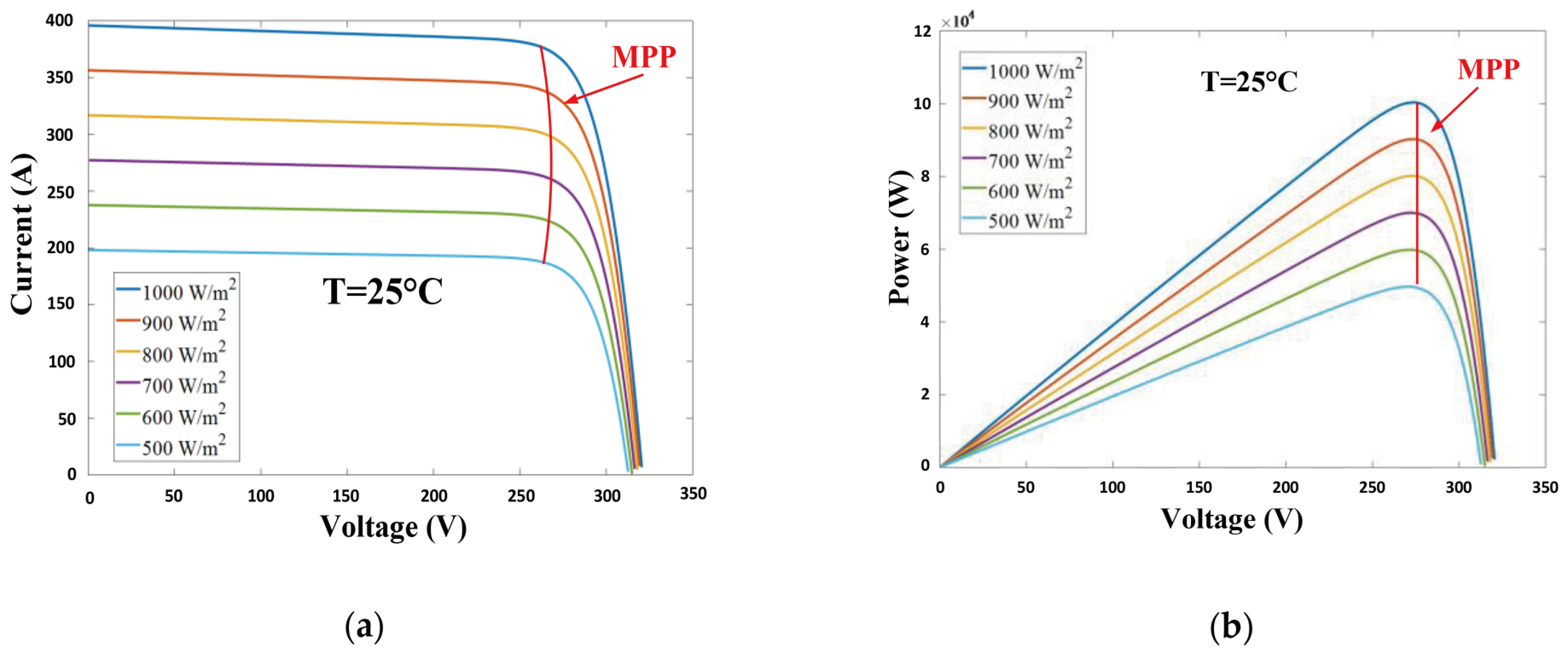
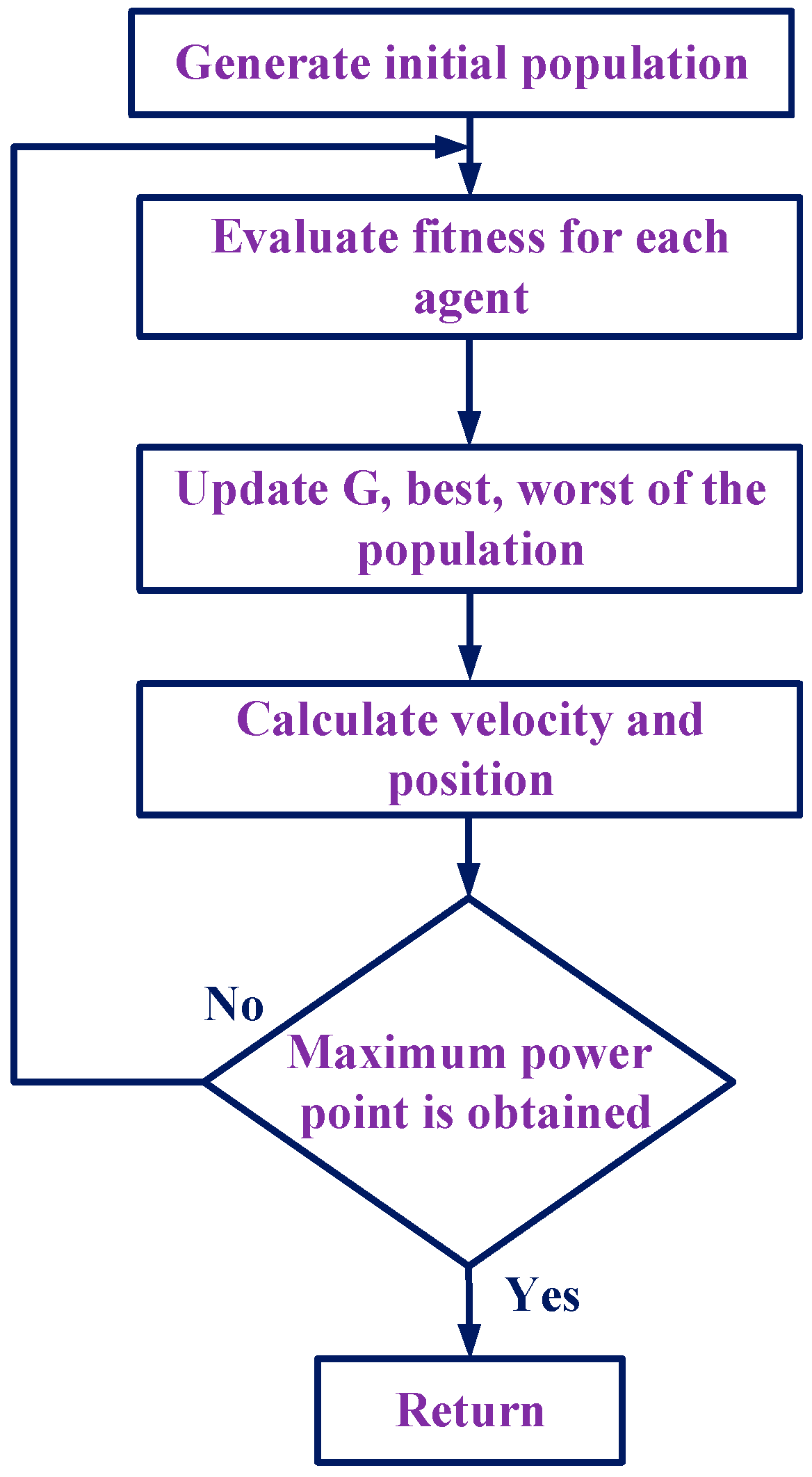



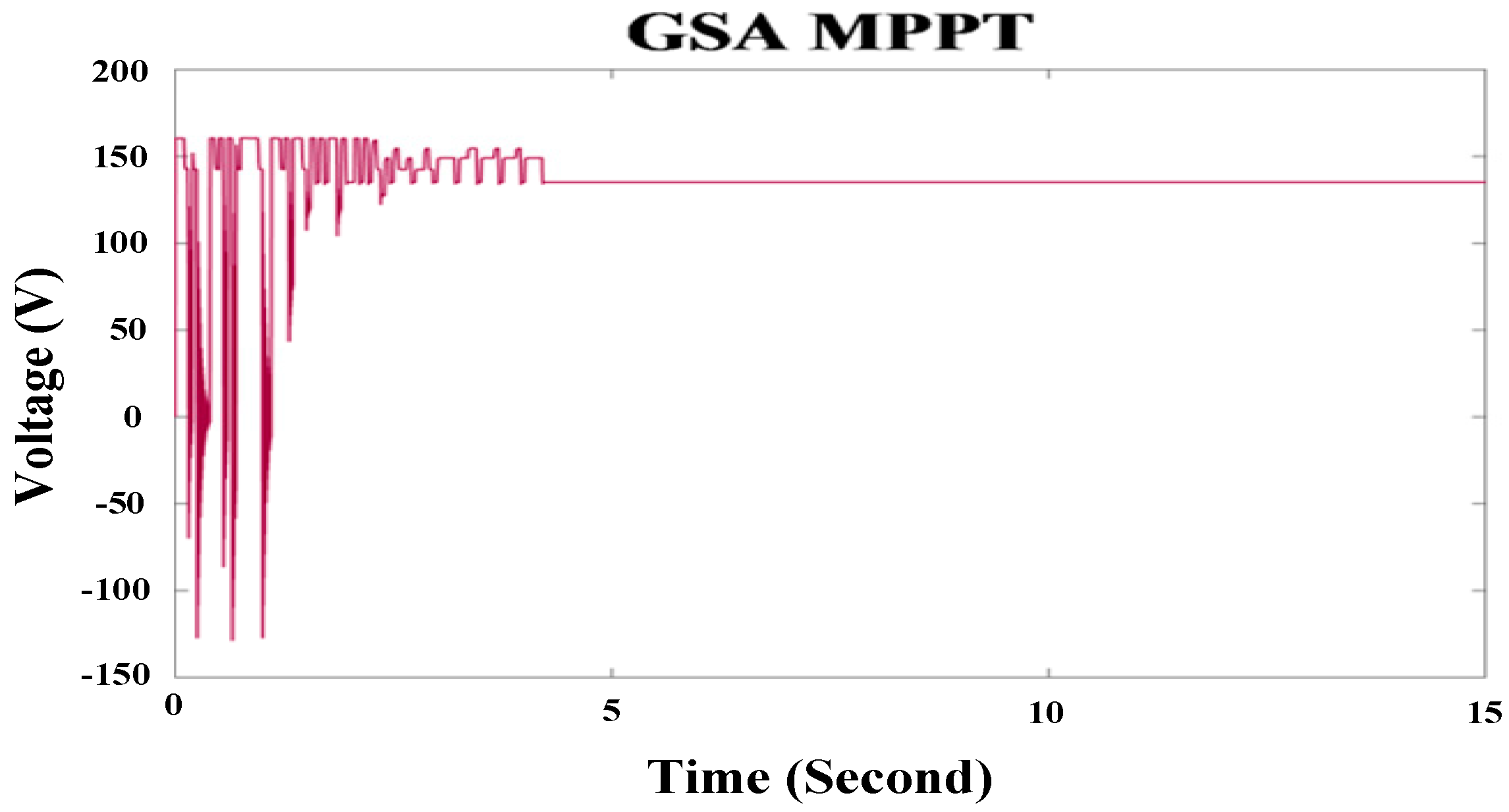




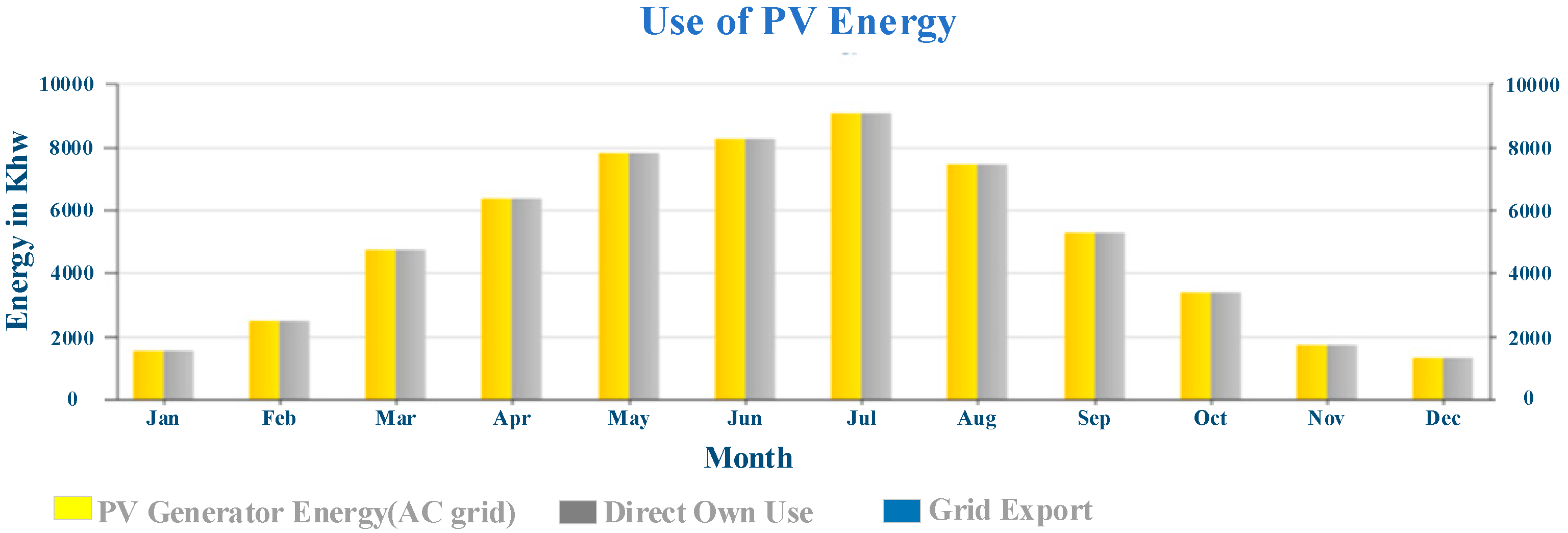


| Parameters | Values |
|---|---|
| L | 0.001 H |
| C1, C2 | 0.001 μF, 0.005 F |
| 20 HZ |
| Parameters | Values |
|---|---|
| PV Generator Output | 51.94 kWp |
| Spec. Annual Yield | 1142.77 kWh/kWp |
| Performance Ratio (PR) | 88.25% |
| PV Generator Energy (AC grid) | 59,370 kWh/year |
| Own Consumption | 59,370 kWh/year |
| Down-regulation at Feed-in Point | 0 kWh/year |
| Grid Export | 0 kWh/year |
| Own Power Consumption | 100.0% |
| CO2 Emissions avoided | 27,897 kg/year |
| Parameters | Symbol | Values |
|---|---|---|
| Population Number | N | 4 |
| Gravitational Reduction Factor | 10 | |
| Gravitational Constant | 20 |
Disclaimer/Publisher’s Note: The statements, opinions and data contained in all publications are solely those of the individual author(s) and contributor(s) and not of MDPI and/or the editor(s). MDPI and/or the editor(s) disclaim responsibility for any injury to people or property resulting from any ideas, methods, instructions or products referred to in the content. |
© 2024 by the authors. Licensee MDPI, Basel, Switzerland. This article is an open access article distributed under the terms and conditions of the Creative Commons Attribution (CC BY) license (https://creativecommons.org/licenses/by/4.0/).
Share and Cite
Darvishpour, Y.; Mousavi Gazafrudi, S.M.; Jafari Kaleybar, H.; Brenna, M. Integration of Rooftop Solar PV on Trains: Comparative Analysis of MPPT Methods for Auxiliary Power Supply of Locomotives in Milan. Electronics 2024, 13, 3537. https://doi.org/10.3390/electronics13173537
Darvishpour Y, Mousavi Gazafrudi SM, Jafari Kaleybar H, Brenna M. Integration of Rooftop Solar PV on Trains: Comparative Analysis of MPPT Methods for Auxiliary Power Supply of Locomotives in Milan. Electronics. 2024; 13(17):3537. https://doi.org/10.3390/electronics13173537
Chicago/Turabian StyleDarvishpour, Yasaman, Sayed Mohammad Mousavi Gazafrudi, Hamed Jafari Kaleybar, and Morris Brenna. 2024. "Integration of Rooftop Solar PV on Trains: Comparative Analysis of MPPT Methods for Auxiliary Power Supply of Locomotives in Milan" Electronics 13, no. 17: 3537. https://doi.org/10.3390/electronics13173537
APA StyleDarvishpour, Y., Mousavi Gazafrudi, S. M., Jafari Kaleybar, H., & Brenna, M. (2024). Integration of Rooftop Solar PV on Trains: Comparative Analysis of MPPT Methods for Auxiliary Power Supply of Locomotives in Milan. Electronics, 13(17), 3537. https://doi.org/10.3390/electronics13173537







